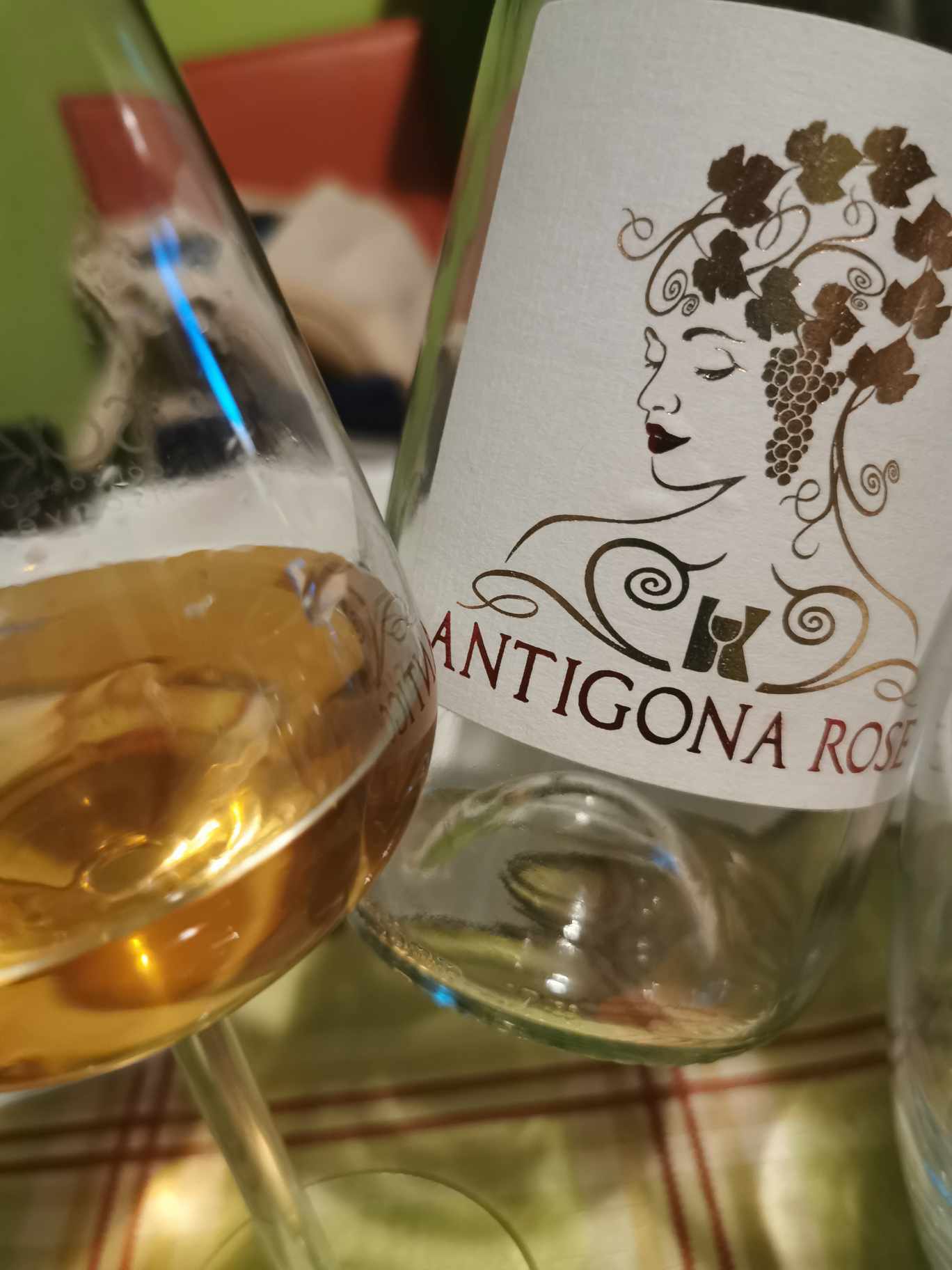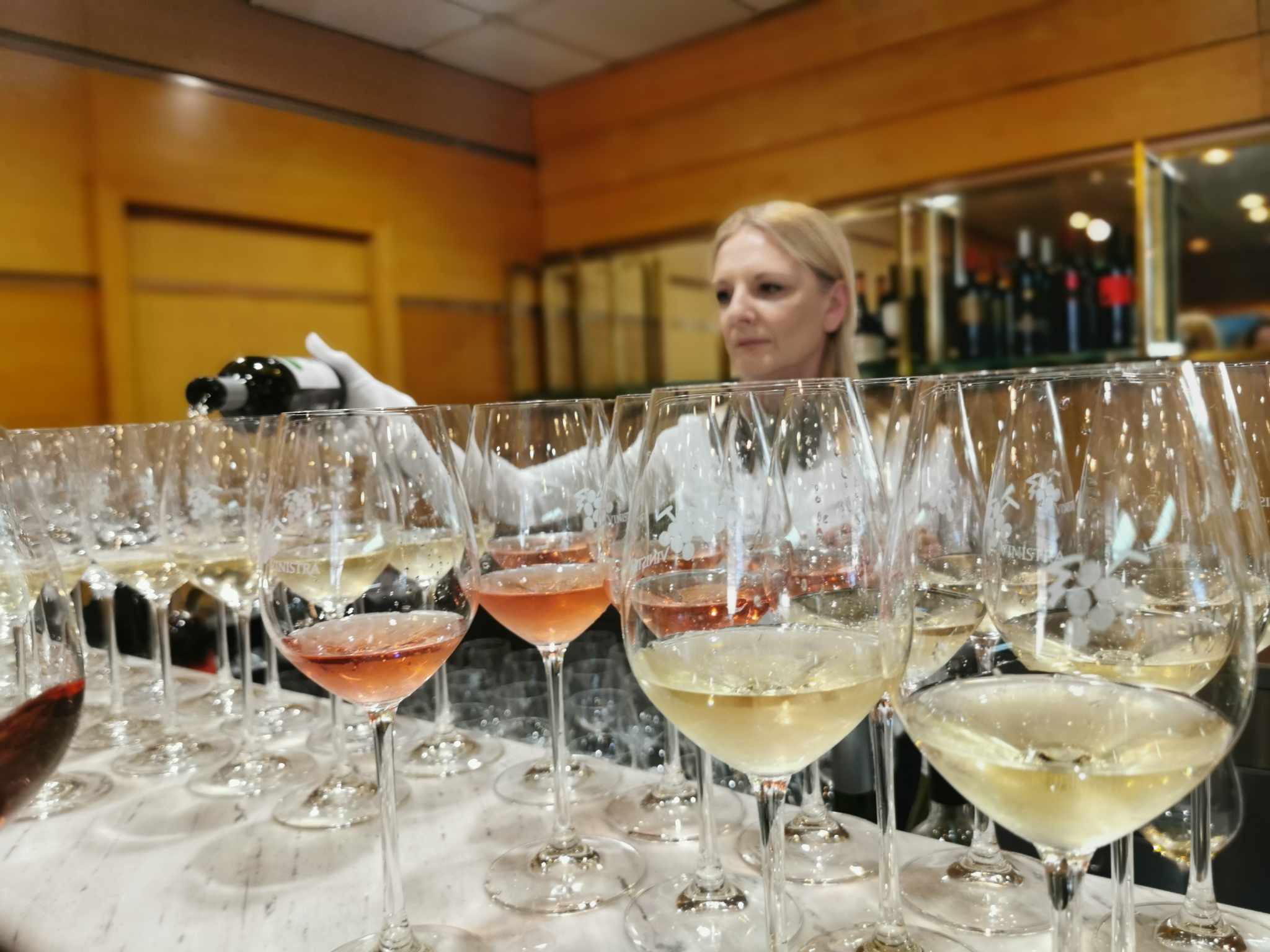News
News / 07/11/2022 / 979
From early morning, the hotel in Cosenza is like a beehive. The wine judges are trying to have breakfast since at 8 a.m. we should leave by bus to the sports hall in Cosenza, where the Concours Mondial de Bruxelles competition is to be held. Hotels in Italy still apply strict covid rules, even though wine judges are generally the only guests in the hotel. In practice, this means that breakfast is served as a buffet, but is covered by a transparent plastic screen so that each hotel guest instructs the waiter what dishes he/she wants to be served
. Such an approach significantly slows down breakfast, and the queue in front of the buffet table is getting longer and longer... Already during the first day, one can feel dissatisfaction of the hotel guests, but the situation still remains under control.
But all that becomes less important after we reach the hall where the CMB 2022 is held. As every year, the very sight of endless rows of tables with the flags of the countries from which the wine judges come leaves a magnificent impression. The coordinated choreography with specially composed music for CMB, which accompanies the entry of the sommeliers into the hall, inevitably causes goosebumps. It's a great feeling to be a part of it all.

This year, the president of my panel came from the USA, the editor of Wine Enthusiast magazine and the author of the World Wine Guys blog with many years of experience in wine competitions. During the 3 days of the competition, we worked in a team of judges from the USA, Italy, Chile, the Czech Republic and Estonia.

After the first day of the competition, we had another opportunity to get to know the traditional products of Calabria. Calabria is a predominantly agricultural region of Italy. That's why it's not surprising the wealth of fruits that come from this climate.


The Calabrese (inhabitants of Calabria) are proud of the quality of extra virgin olive oil from Calabria. During our stay in Calabria, we had the opportunity to taste samples of olive oil from all parts of the region, but definitely my favorite was l'olio extravergine d'oliva DOP Alto Crotonese.
Surely when one thinks of Calabria, the first association is olives and tangerines, but Calabria is also famous for the production of red onion (cipolla rossa di Tropea Calabria IGP). Onions arrived in Calabria thanks to the Phoenicians and today red onion production is limited to the Tyrrhenian coast of Calabria (Cosenza, Catanzaro and Vibo Valentia). Like grapes, red onions are rich in polyphenols and anthocyanins. Calabria boasts unique autochthonous varieties of red onions, and the warm sea breeze blowing through the onion fields gives this product from Calabria a unique taste.
Clementines (Clementine di Calabria IGP) are also one of the recognizable symbols of Calabria. They were created by crossing oranges and tangerines, and they arrived in Calabria most likely from Algeria. In Italy, clementines have been grown in plantations since the 1930s and are suitable for cultivation in the plains. Calabria is especially alive from October to February when the clementine plantations echo with the song of the pickers.
The tomato from Belmonte originates from the USA, and at the beginning of the 20th century it arrived in Italy thanks to the Calabrian emigrant Giulio Mercurio. Over the course of more than 100 years, this variety of tomato has adapted to the local climate, and you can find it at your local market as it is an ideal ingredient for summer salads.
Calabrian licorice almost lost its identity during the 20th century. However, the root of this plant, which is widely represented throughout Calabria, is increasingly used both in pharmacy and in gastronomy. Today, Calabrian licorice can be found throughout the region and its popularity is currently on the rise.
In order to get to know local products better, we go in the afternoon to the interior of Calabria. Serraguimenta Castle in Altomonte is surrounded by an estate that covers more than 600 hectares. The property is entirely dedicated to agriculture, so the property includes vineyards, olive and vegetable plantations, a farm of autochthonous black pigs (suino nero di Calabria), and cows. The best way to see the size of the entire estate is to take a tractor ride. While we toured the property, we also learned that one of the difficulties in Calabria is the general lack of labor. The job vacancies for farm workers are always open, but the region lacks workers who would engage in agriculture.




The castle itself was built in the 16th century and was home to the Counts of Altomonte from the Sanseverino aristocratic family for generations. After World War II, the castle and estate came into the possession of Federico Bilotti.

We arrived in Corigliano-Rossano in the evening because we had an organized dinner with Calabrian specialties at the Corigliano Calabro Castle. Of course, the beginning is always preceded by numerous ceremonial speeches and words of welcome (it seems that it is extremely important for Italians to give their speech in front of foreign guests even if they do not speak English and an interpreter is not provided). But after more than half an hour of dry formal speeches in Italian, the dinner becomes even more delicious and attractive. And at the end, of course, limoncello follows. Almost 98% of Italy's national lemon production comes from Calabria.








Tomislav Ivanović
Awarded wine writer, wine critic and contributor to selected wine magazines. WSET3-certified author and editor-in-chief of www.vinopedia.rs. Member of Vojvodina Sommelier Association. Juror in national and international wine competitions. Lecturing about wines of Serbia and the Balkans. Local partner of Wine Mosaic organization. Co-founder of International Prokupac Day.

Pročitajte i druge članke iz ove rubrike:


VINOPEDIA TOP 10 2024
PROČITAJ VIŠE


GIUAANI - VINSKI TURIZAM NA GRUZIJSKI NAČIN
PROČITAJ VIŠE


SPASIMO STARE VINOGRADE SRBIJE
PROČITAJ VIŠE


NAŠLI SMO ANTIGONU IZ ORAHOVCA
PROČITAJ VIŠE


SRPSKO VINO KOŠTA 100 EUR - I ŠTA ĆEMO SAD?
PROČITAJ VIŠE
Winner MILLESIMA BLOG AWARD 2016

Pobednik MILLESIMA BLOG AWARD 2016
VINO & FINO wine personality of the year 2016

VINO & FINO vinska ličnost godine 2016